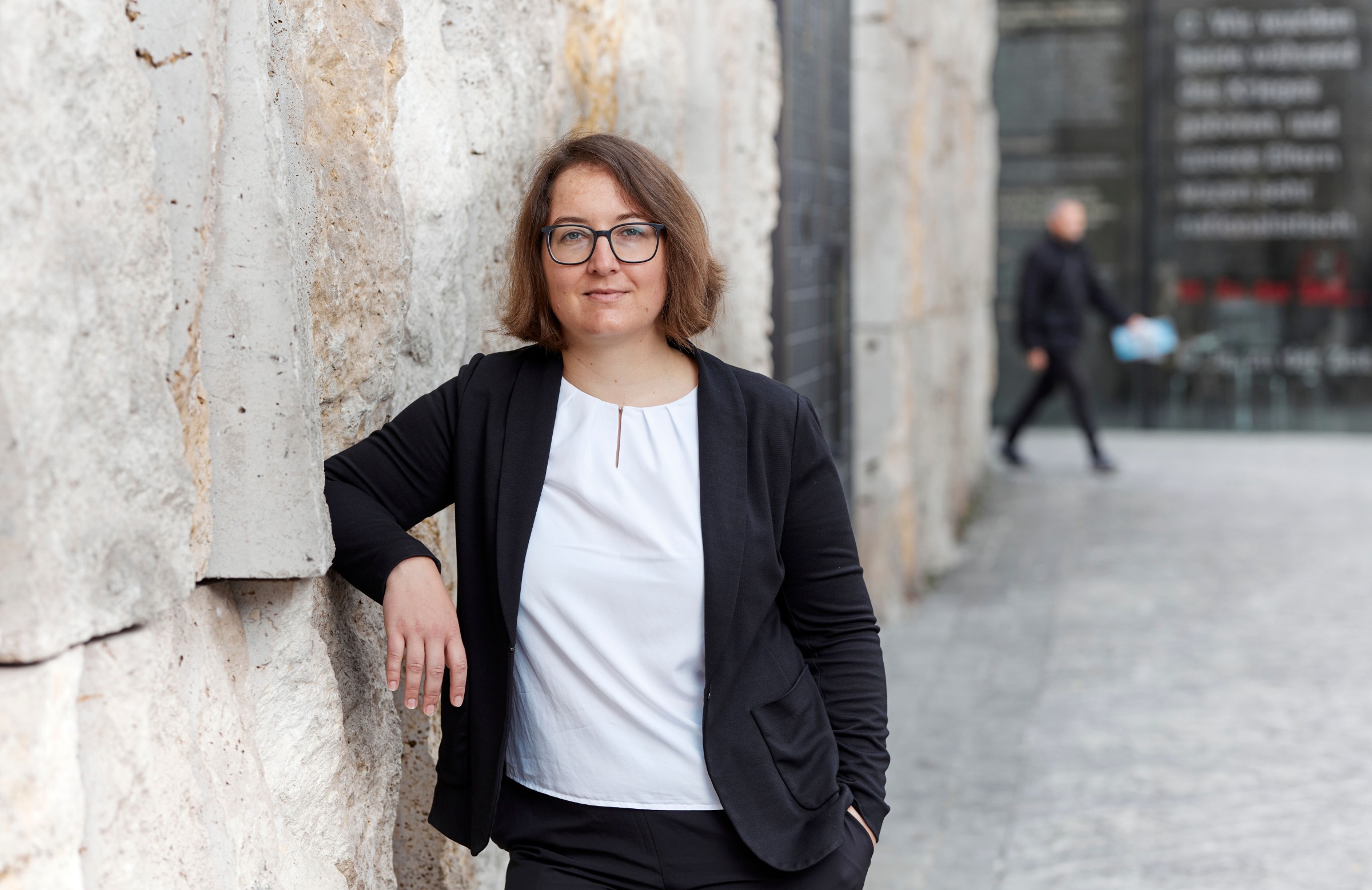Persecution, Shoah, Holocaust: the history of Jewish life in Germany is often reduced to these things. A project at the Faculty of History and the Arts wants to broaden perspectives. Students have been developing an interactive digital map on German-Jewish history in the “Common Places, Common Times” seminar since the summer semester 2021. The map is designed for school students from the age of around 15, who are offered this exciting tool for discovering the diversity of Jewish life in German history and recognizing its traces in the present.
Students can click on the biography of Kurt Landauer, for example, who was the president of Bayern Munich soccer club before and after the Nazi period. And there is Nanette Kaula – “lovely Nanni” – who captivated King Ludwig I to the point that he immortalized her in his ‘Gallery of Beauties’ at Nymphenburg Palace. Also, we have the grandmother of Nanette, Madame Kaulla from Hechingen, who was a highly successful entrepreneur in the early modern period.
“If you place the biographies side by side, it’s striking how different the people and their lives were,” says Julia Treindl, who leads the seminar and designed the map. “Public discourse about Jews and Jewishness are often very ritualized and one-dimensional,” explains Treindl. “Even among teachers, many seem to assume that their focus should be almost exclusively on the Holocaust. I’m certainly not seeking to downplay the importance of that catastrophe, but I do want to show that biographies are not reducible to the experience of persecution.”
An excellent teaching project
Also award-winning: The seminar paper by economics student Miriam
Read more
For her dedication, Treindl has just received the LMU Teaching Innovation Award, worth 10,000 euros. Only three years ago, she was a young teacher of history, Latin, and social studies at an academic-oriented high school in a Munich suburb, when the Bavarian Ministry of Culture called her up to the Faculty of History and the Arts at LMU. The faculty was already familiar to her, and her joy at returning to her alma mater was great: this was where she had written her Magister thesis in the field of ancient Jewish history.
Now her task is to boost the practical relevance of teacher training. Furthermore, Treindl offers advanced training and educational projects for teachers who are already working at schools. In this way, she wants to accelerate knowledge transfer between university and teaching practice. After all, it can take decades for a new textbook to appear, but in a digital project like hers scientific insights can be communicated swiftly to educators.
The original idea for the interactive map sprang from Treindl’s desire to contribute to the Year of Remembrance 2021, which commemorated 1,700 years of Jewish life in Germany. So along with her students, she looked at websites that impart historical knowledge; she read school textbooks; and she persuaded web designer Manuel Portela to enter a collaboration. Portela had already worked on the Geschichtomat portal about the history of German Jews in Hamburg. Moreover, Treindl secured funding from an association set up to celebrate 1,700 years of Jewish life in Germany and from the German Federal Ministry of the Interior, Building, and Community.
Easy to use in the classroom
In developing the digital maps, she was also guided by her practical experience. So that the map can be integrated without difficulty into lessons, each entry is structured like a lesson period. School students need around 45 minutes to complete a topic. They read a text, listen to an interview, and look at pictures. Next, they apply what they have learned in a quiz and discuss issues with topical relevance: What would the general public today make of a ‘Gallery of Beauties’? What factors determine the business success of women? And can they understand the decision of Kurt Landauer, who experienced Nazi persecution at first hand and whose siblings were murdered in the Shoah, to return from exile to Munich after the Second World War?
Treindl chose people and events that would capture the imagination of young people. Learning, she knows, works best using multiple channels: “It’s about variety,” she explains. “And for this reason, we make use of audio and visual content.” The input is supplied by the participants in the project seminars, many of whom are training to become a teacher, while others are bachelor’s and master’s students majoring in history. In the project seminar, they develop new skills: The complex academic texts must be condensed and rendered into suitable teaching matter. Students conduct interviews with academics, including young researchers who are still doing their doctorates. They write short, appealing texts, edit audio material, and devise quiz questions and points for discussion. These are all novel, challenging tasks, which, attests Treindl, give the students a lot of enjoyment. “The fruits of our labor being made freely available to everybody at the end gives our work extra meaning.”
Still more to come
To publicize the project among teachers, she works closely with the Academy for Teacher Training in Dillingen. The feedback she has received so far from teaching professionals has been very positive. Nevertheless, winning the LMU Teaching Innovation Award came as a complete surprise. “I was over the moon! It’s a great privilege to have my work recognized in this way.”
Eight map entries are currently live; another six are being revised and will then be placed online. And the map has the potential to keep growing. One day it could be very densely populated, not least because Treindl keeps coming across topics that fascinate her. Who would have thought, for example, that in Berlin during the Weimar period there were small intellectual circles in which Jews and Muslims went hiking together? In future, a click could reveal what was discussed on these walks…

